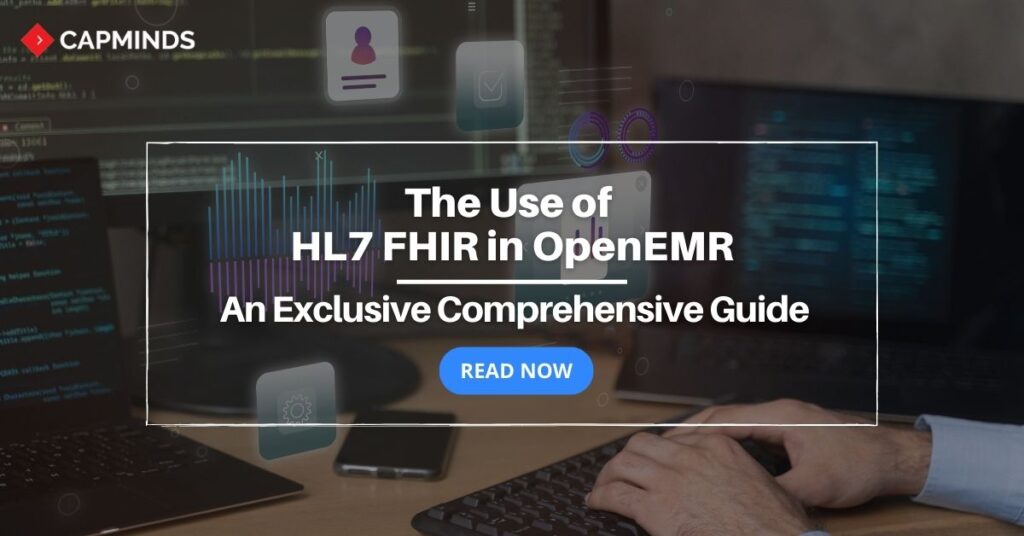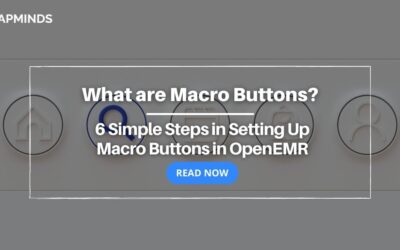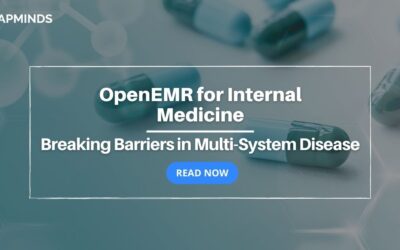The Use of HL7 FHIR in OpenEMR: An Exclusive Comprehensive Guide
In the dynamic world of healthcare, “interoperability” is the name of the game.
RELATED: HL7 ORU Message: An in-depth guide that you cannot miss
Patient information must flow seamlessly and securely between systems to ensure the best possible care. And this is where HL7 FHIR (Fast Healthcare Interoperability Resources) steps into the spotlight, particularly in electronic health records (EHR) systems like OpenEMR.
RELATED: How to Overcome the Top 10 HIE Challenges with OpenEMR?
If you’re wondering what HL7 FHIR is and how it’s revolutionizing healthcare data exchange within OpenEMR, you’re in the right place. Welcome to our comprehensive guide, where we’ll dive into the technicalities while keeping it engaging.
What is HL7 FHIR? Explained in Simple Terms
To kick things off, let’s understand what HL7 FHIR is all about.
- At its core, FHIR is a set of standards for exchanging healthcare information electronically
- It’s designed to be easy to implement and comes with built-in flexibility
- This means it adapts to your specific needs, making it a perfect fit for OpenEMR’s open-source nature.
Benefits of HL7 FHIR in OpenEMR
1. Data Interoperability
- One of the primary goals of FHIR is to enhance data interoperability
- In OpenEMR, this means that patient information can be shared seamlessly with other providers, systems, and applications
- Imagine a scenario where a patient receives care from multiple providers – FHIR ensures their medical history travels with them securely
2. Streamlined Workflows
- FHIR facilitates smoother workflows within OpenEMR
- It simplifies the exchange of data between the EHR system and external entities like laboratories and pharmacies
- This results in quicker access to test results and more efficient prescription management, ultimately saving time and enhancing patient care
3. Patient-Centric Care
- OpenEMR, powered by FHIR, enables a more patient-centric approach to healthcare
- With standardized data representation and easy data exchange, providers can access comprehensive patient information, allowing them to make more informed decisions during patient encounters
- This is the cornerstone of delivering higher-quality care
4. Third-Party Integration
- FHIR allows OpenEMR to seamlessly integrate with third-party applications and devices
- For instance, remote monitoring devices can transmit data directly into OpenEMR, ensuring that providers have access to real-time patient data, which is especially crucial for conditions that require continuous monitoring
5. Extensibility
- FHIR is not a one-size-fits-all solution
- OpenEMR can create extensions to adapt FHIR to its specific requirements
- This means that OpenEMR can accommodate various healthcare data needs without the need for complex system overhauls
- It’s a highly customizable approach to EHR
These are just some of the benefits. There are plenty more of these to HL7 FHIR that we have covered in many of our previous blogs. Check them out for more information.
Why Is FHIR a Game-Changer for OpenEMR?
- OpenEMR, as an open-source EHR system, focuses on providing efficient healthcare solutions
- HL7 FHIR aligns perfectly with this goal by enabling seamless data exchange with various healthcare systems, applications, and devices
The Technical Magic Behind FHIR
Now, let’s dive into the nitty-gritty of how FHIR works its technical magic within OpenEMR.
1. Data Structure
- FHIR uses a simple data structure called “resources” to represent various elements of healthcare information like patients, medications, and diagnoses
- These resources are like building blocks that fit together to form a comprehensive healthcare record
2. RESTful API
- FHIR leverages the RESTful API architecture, making it lightweight and highly accessible
- This means that within OpenEMR, you can use FHIR to interact with patient records using standard HTTP methods like GET, POST, PUT, and DELETE
- This simplicity is one of the reasons why FHIR is so appealing
3. Interoperability
- One of FHIR’s primary goals is to improve interoperability by offering a standardized way to represent healthcare information
- It defines a common language that various healthcare systems can understand, ensuring seamless data exchange
4. Extensions
- FHIR isn’t rigid; it’s flexible
- You can create extensions to adapt FHIR to your specific needs
- This allows OpenEMR to accommodate various healthcare data requirements without major system overhauls
FHIR and OpenEMR in Action
Let’s illustrate how FHIR is being put to work within OpenEMR.
1. Patient Information Exchange
- FHIR enables OpenEMR to share patient records with other healthcare systems effortlessly
- This is especially valuable when a patient seeks care from multiple providers
- With FHIR, the patient’s medical history can be transmitted securely and quickly
2. Easier Integration
- OpenEMR can seamlessly integrate with third-party apps and devices
- For example, if a patient is using a remote monitoring device, the data can be transmitted directly into OpenEMR using FHIR standards
3. Clinical Decision Support
- FHIR’s standardized representation of healthcare data makes it easier to implement clinical decision support systems within OpenEMR
- This helps providers make more informed decisions during patient encounters
4. Streamlined Workflow
- FHIR simplifies the exchange of healthcare data between OpenEMR and external systems like laboratories and pharmacies
- This means quicker test results and more efficient prescription management
The Future of OpenEMR with FHIR
The adoption of HL7 FHIR within OpenEMR is not just a technological upgrade; it’s a transformation. It signifies a future where patient data flows efficiently, securely, and with ease, ultimately enhancing the quality of care provided. As healthcare evolves, the role of FHIR in EHR systems like OpenEMR will become even more significant.
The road ahead is filled with opportunities for OpenEMR to harness the power of FHIR fully. Expect to see even more innovative solutions that benefit healthcare providers and, most importantly, their patients. Interoperability, data exchange, and patient-centered care are no longer just buzzwords; they are the realities shaping the future of healthcare, thanks to HL7 FHIR and OpenEMR.
Final Thoughts
HL7 FHIR is the glue that binds OpenEMR to a world of seamless data exchange. It’s a game-changer for the healthcare industry, promoting interoperability and a patient-centric approach. OpenEMR’s adoption of FHIR is a leap forward, ensuring that patient data flows efficiently, securely, and with ease, ultimately improving the quality of care.
In this comprehensive guide, we’ve peeled back the layers of FHIR, delving into its technical aspects while highlighting its real-world applications within OpenEMR. As healthcare continues to evolve, the role of FHIR in EHR systems like OpenEMR is set to become even more significant, promising a brighter, more connected future for healthcare providers and their patients.
OpenEMR Services from CapMinds
CapMinds OpenEMR consigns clinicians with the best features and ways to integrate. It makes their workflows more efficient and filtered. The integrated features will allow them to combine the ability of patient record management with conceptual and concurrent reminders. This enhances the process of decision-making and improves patient care and quality.
- At CapMinds, custom solutions like OpenEMR are developed with much curation and accuracy to match the special practice needs
- It will be low-cost, the perfect budget solution to the typical traditional subscription-based ones for your behavioral health practice’s long-term future
- CapMinds OpenEMR prioritizes secure data management & ensures compliance with industry regulations, offering healthcare providers peace of mind
- Exclusive: “Clients can own the code and resell it”
Get the best technologies and HIPAA-compliant and efficient OpenEMR that can be tailored to fit your practice from CapMinds Technology. Our OpenEMR services facilitate a Modern User Interface (UI), customization, production support & training. Also facilitates billing, report & specialty enhancements, clearing house integrations, e-prescription, cloud, and more.
“Get the most experienced, proven, and perfect professional support for your OpenEMR”



